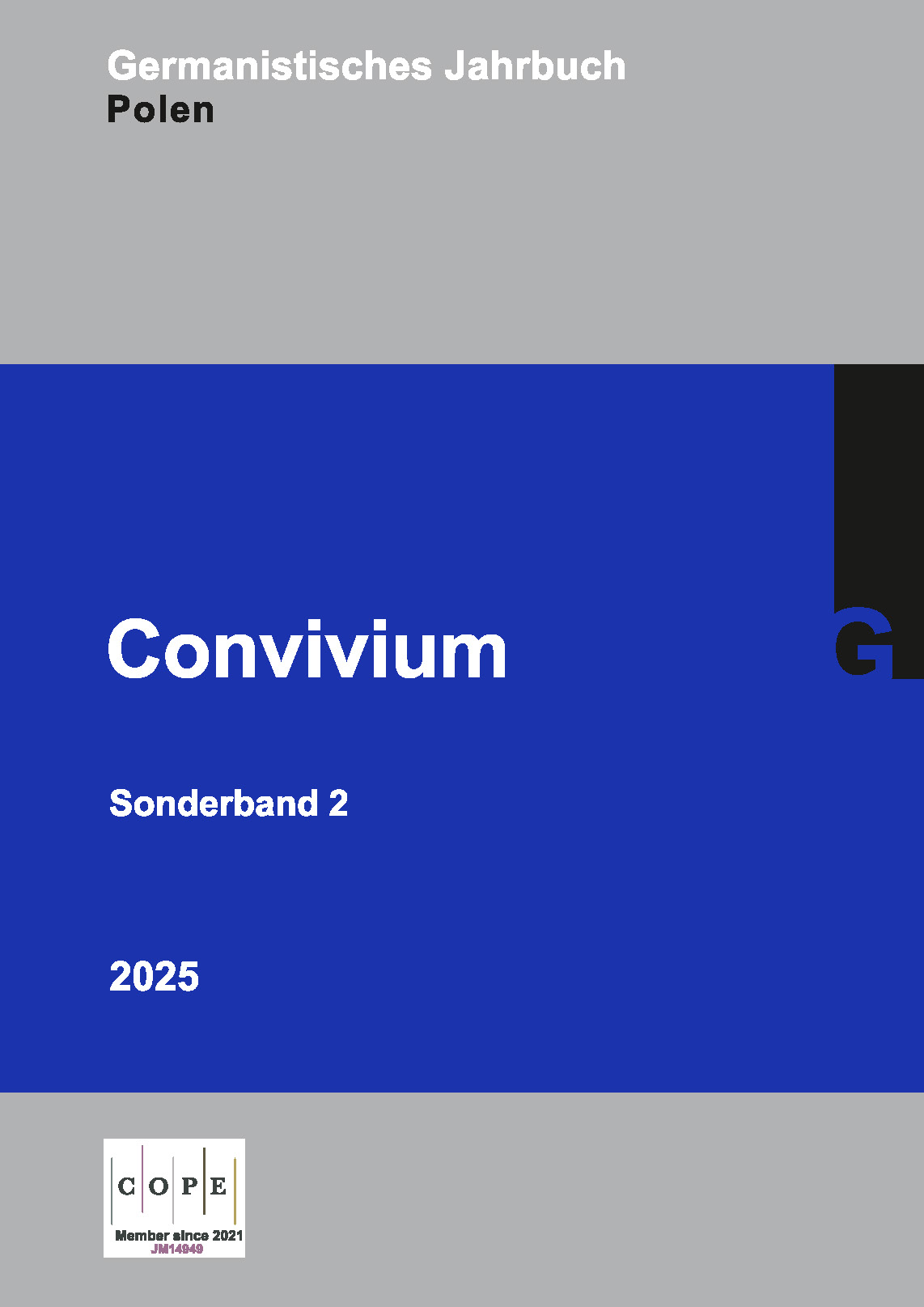A Sociable Misanthrope: The Longing for Spaces of Coexistence in THOMAS BERNHARD’S Work
DOI:
https://doi.org/10.18778/2196-8403.S2.05Keywords:
THOMAS BERNHARD, coexistence, THEODOR W. ADORNO, aesthetic negativity, KLAUS P. HANSEN, collective theoryAbstract
This article argues that the concept of coexistence plays a central role in the works of the Austrian writer THOMAS BERNHARD, thus refuting the widespread notion that his literature is characterized by negativity and misanthropy. The article is based on some postulates of THEODOR W. ADORNO’S Aesthetic Theory, which elucidate the negative component in Bernhard‘s literature. This interpretation is also related to KLAUS P. HANSEN’S collective theory. Thus, the role of art and literature in redesigning spaces of coexistence is emphasized.
References
Adorno, Theodor W. (1970 / 2003): Ästhetische Theorie. Gesammelte Schriften. Bd. 7. Frankfurt a.M.
Google Scholar
Adorno, Theodor W. / Horkheimer, Max (1969 / 212013): Dialektik der Aufklärung. Frankfurt a.M.
Google Scholar
Berger, Peter L. / Luckmann, Thomas (1966): The Social Construction of Reality. New York.
Google Scholar
Bernhard, Thomas (1963): Frost. Frankfurt a.M.
Google Scholar
Bernhard, Thomas (1967): Verstörung. Frankfurt a.M.
Google Scholar
Bernhard, Thomas (1970): Das Kalkwerk. Frankfurt a.M.
Google Scholar
Bernhard, Thomas (1975): Die Ursache. Eine Andeutung. Salzburg.
Google Scholar
Bernhard, Thomas (1975): Korrektur. Roman. Frankfurt a.M.
Google Scholar
Bernhard, Thomas (1976): Der Keller. Eine Entziehung. Salzburg / Wien.
Google Scholar
Bernhard, Thomas (1978): Ja. Frankfurt a.M.
Google Scholar
Bernhard, Thomas (1998 / 32009): Die Autobiographie. Salzburg.
Google Scholar
Bernhard, Thomas / Hamm, Peter (2011): „Sind Sie gern böse?“. Berlin.
Google Scholar
Bloch, Ernst (1959 / 71980]): Prinzip Hoffnung. Frankfurt a.M.
Google Scholar
Escobar Moncada, Jairo (2014): Mímesis en Platón y Adorno. In: Eidos 20:173-220.
Google Scholar
DOI: https://doi.org/10.14482/eidos.20.5912
Ette, Ottmar (2004): ÜberLebenswissen. Die Aufgabe der Philologie. Berlin.
Google Scholar
Ette, Ottmar (2012): Konvivenz. Literatur und Leben nach dem Paradies. Berlin.
Google Scholar
Fleischmann, Krista (1981): Monologe auf Mallorca. Berlin.
Google Scholar
Hansen, Klaus P. (2000): Kultur und Kulturwissenschaften. Stuttgart.
Google Scholar
Hansen, Klaus P. (2022): Das Paradigma Kollektiv. Neue Einsichten in Vergesellschaftung und das Wesen des Sozialen. Bielefeld.
Google Scholar
DOI: https://doi.org/10.1515/9783839455968
Mittermayer, Manfred (1988): Ich werden. Versuch einer Thomas-Bernhard-Lektüre. Stuttgart.
Google Scholar
Mittermayer, Manfred (1995): Thomas Bernhard. Stuttgart.
Google Scholar
DOI: https://doi.org/10.1007/978-3-476-03988-0
Rathje, Stefanie (2022): Der Kollektivansatz. Grundzüge, Leistungen, Weiterentwicklung. In: Marschelke, Jan-Cristoph (ed.): Die Anatomie des Kollektivs. Bielefeld, 31-54.
Google Scholar
DOI: https://doi.org/10.1515/9783839463420-003
Schelz, Wolfgang (2014): Thomas Bernhard und der Staat. Aachen.
Google Scholar
Schmidt-Dengler, Wendelin (2010): Der Übertreibungskünstler. Studien zu Thomas Bernhard. Wien.
Google Scholar
Seel, Martin (1984): Die Kunst der Entzweiung: zum Begriff der ästhetischen Rationalität. Frankfurt a.M.
Google Scholar
Stein, Swen (2008): Der Begriff der Mimesis in der Ästhetischen Theorie Adornos. In: Kunsttexte.de 4: https://edoc.hu-berlin.de/bitstream/handle/18452/8077/stein.pdf (18.02.2024).
Google Scholar
Thuswaldner, Gregor (2011): Morbus Austriacus. Thomas Bernhards Österreichkritik. Wien.
Google Scholar
Villamizar, Natalia (2020): Unheimlichkeit und Mimesis in Die Ursache von Thomas Bernhard. In: Bescansa, Carme et al. (eds.): Unheimliche Heimaträume. Repräsentationen von Heimat in der deutschsprachigen Literatur seit 1918. Bern, 117-124.
Google Scholar
Downloads
Published
How to Cite
Issue
Section
License

This work is licensed under a Creative Commons Attribution-NonCommercial-NoDerivatives 4.0 International License.










